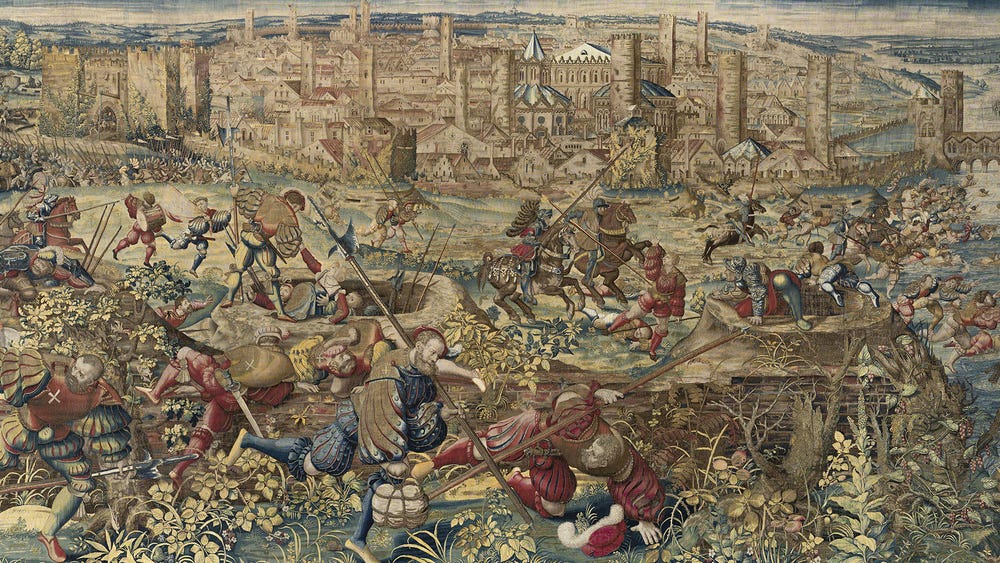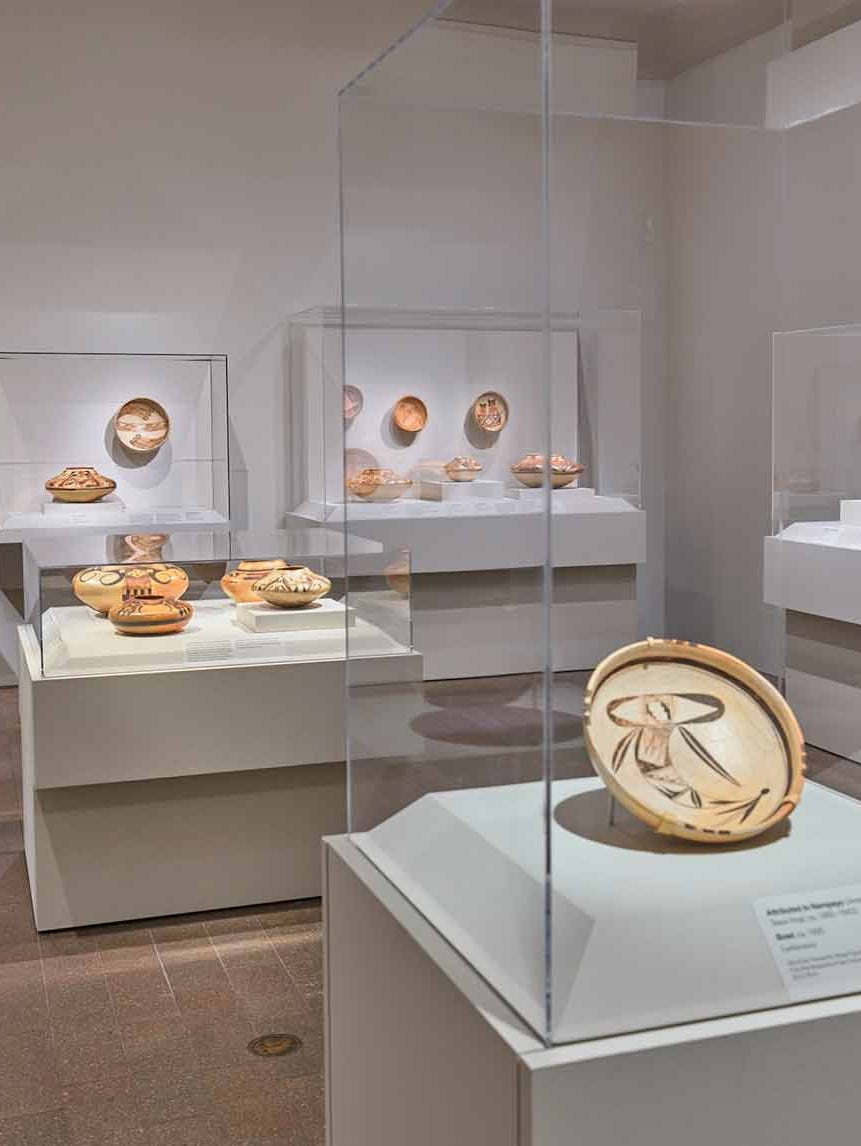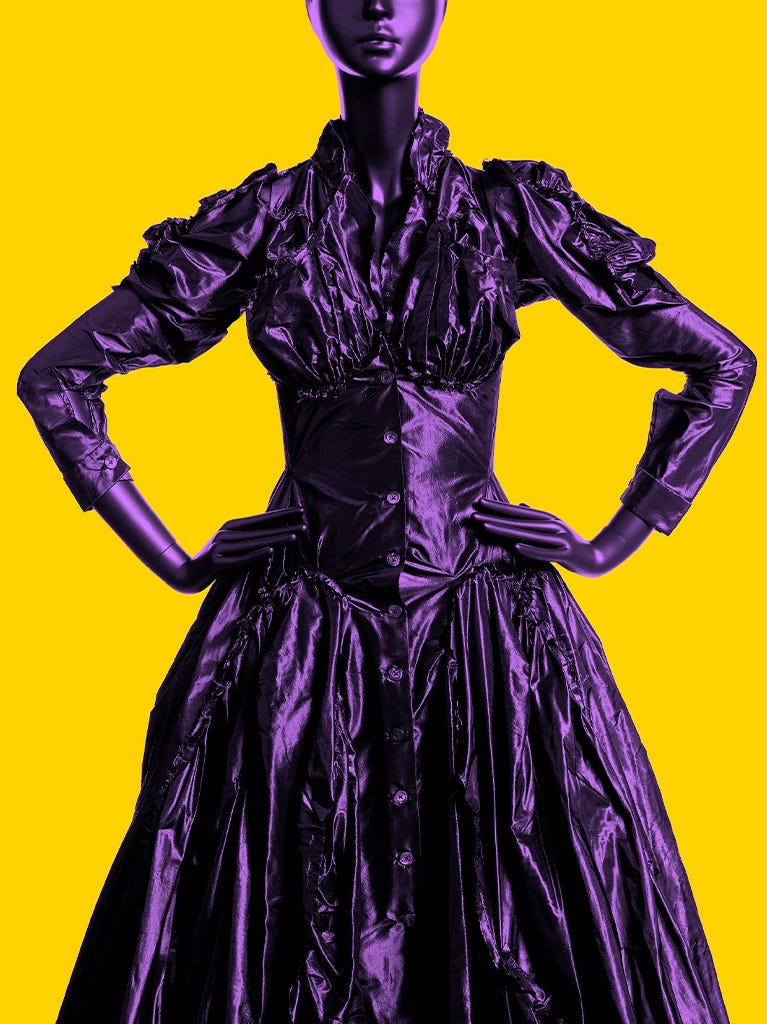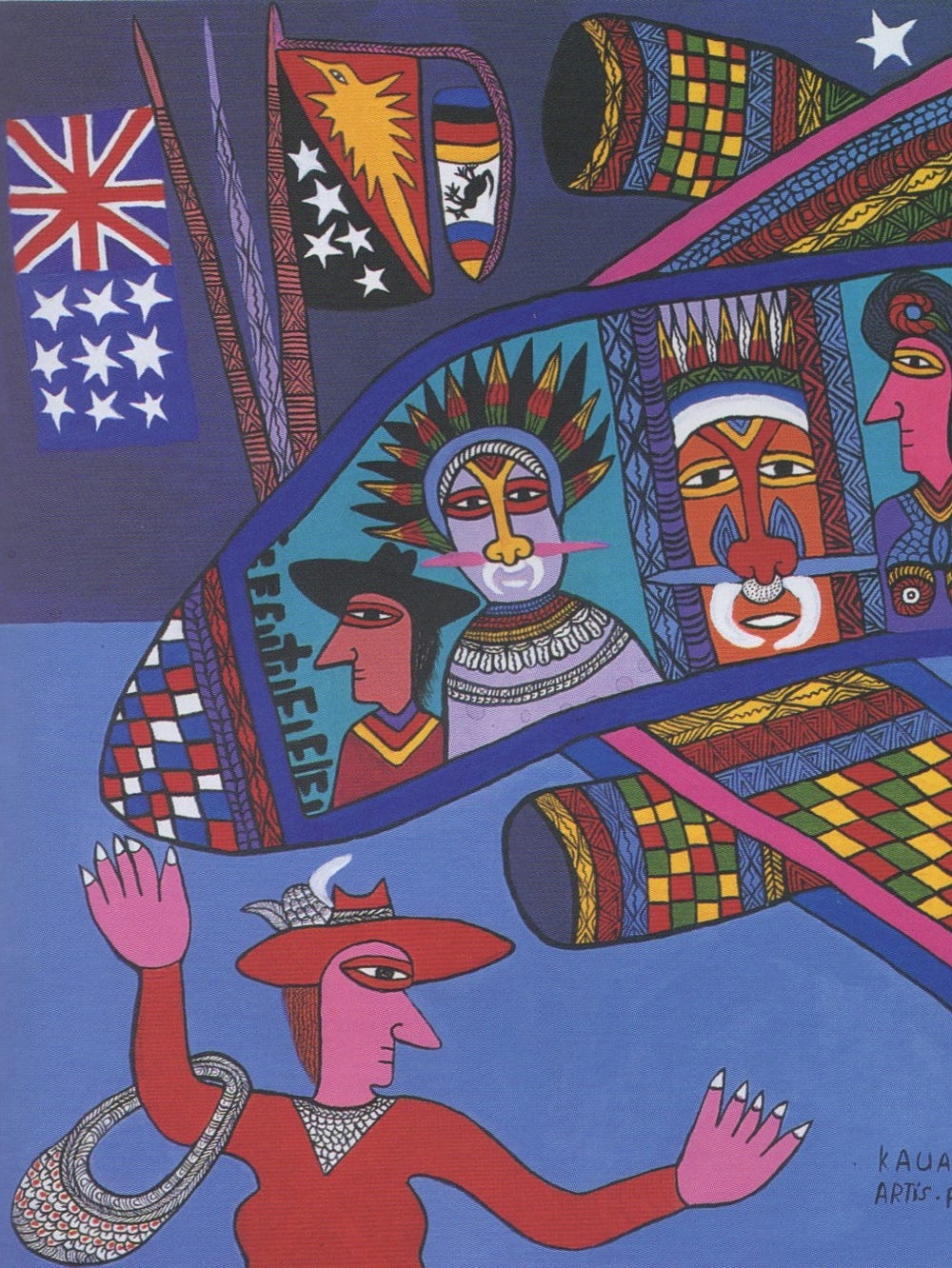Bernard van Orley (Flemish, ca. 1488–1541), woven in the workshop of Willem and Jan Dermoyen, Brussels (Flemish, both active 1520s–1540s), The Sortie of the Besieged Imperial Troops from Pavia, and the Rout of the Swiss Guard (detail), ca. 1528–31. Wool, silk, gold, and silver thread, 165 3/8 x 350 in. (420 x 889 cm). Museo e Real Bosco di Capodimonte, Naples. Image courtesy of Museo e Real Bosco di Capodimonte
Art and War in the Renaissance: The Battle of Pavia Tapestries
Jump to
This exhibition marks the first time this landmark group of Renaissance tapestries has been on view in the United States. The seven enormous panels, each about 27 by 14 feet, are displayed alongside impressive examples of 16th-century arms and armor. The Battle of Pavia tapestries commemorate Holy Roman Emperor Charles V’s 1525 victory over French King Francis I during the 16th-century Italian Wars. Among the most prized Renaissance arts, monumental tapestries served as dynamic tools for storytelling and political propaganda. They required remarkable feats of collaboration between artists and weavers — a single panel could take over a year to produce. Designed by court artist Bernard van Orley (1487–1541), the Pavia tapestries were groundbreaking creative achievements that incorporated the latest artistic advances. Their vast scale draws viewers into the world of Renaissance politics, technology, and fashion.
Exhibition organization
The exhibition is organized by the Museo e Real Bosco di Capodimonte and The Museum Box in collaboration with the Fine Arts Museums of San Francisco and the Kimbell Art Museum.
Sponsors
Additional support is provided by The Gladys Krieble Delmas Foundation.



